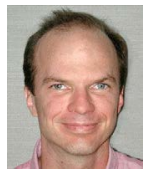The first NFES meeting of the 2022 season, to be held digitally using Teams, Monday, 12th of January, 2022, at 15:00. The presentation “SONIC IMAGING: RECENT AND FUTURE DEVELOPMENTS” will be given by Nicholas Bennett, from Schlumberger. 2021-2022 SPWLA GLOBAL DISTINGUISHED SPEAKER SERIES.
Abstract:
Sonic imaging workflows map formation features (bedding, fractures, faults, other wellbores) using reflections recorded by acoustic logging tools. While the traditional workflow produces 2D migration images, more recent deliverables (3D model of reflectors and logs of true dip and azimuth, etc.) have been derived directly from the waveform measurements without requiring a migration (Bennett et al, 2019). While deep LWD EM measurements have a long history of providing formation structural information related to bedding and faults (Thiel et al, 2021 and many other publications), operators still desire to map near wellbore structures using acoustics, particularly fractures, to understand, for example, the fluid flow potential for their reservoir.
In the past few years, several simultaneous developments to improve the quality and repeatability of sonic imaging answers have evolved including (1) improved filtering workflows to reduce the interference of the direct borehole modes (Hirabayashi, 2021); (2) improvements in the traditional 2D migration workflows (Hirabayashi, 2016); and (3) work to elicit fully 3D information from the acoustic measurements and provide this 3D mapping of the near wellbore structures without using a migration. This last item has been made possible using an automated time pick combined with an automated ray tracing inversion and 3D slowness time coherence (3D STC) workflow for both monopole measurements (Bennett et al, 2019) and for dipole waveforms (Donald et al, 2020).
More recently, a sonic imaging service was demonstrated on a slim through-the-bit sonic tool to provide a 3D formation mapping closer to drill time (Akinyose et al., 2021). This development, together with a new unified and cloud-enabled processing provides for improved turnaround times and makes sonic imaging more capable of delivering answers in time for completion decisions.
Despite these further developments in sonic imaging capabilities, we observe that today sonic imaging typically provides only the 3D positions of the layer boundaries, fractures, faults etc., and does not include formation properties such as formation layer slowness. This remains an area requiring further development. Positive results in this direction would more closely bind the sonic imaging results to downstream geomechanics and petrophysics workflows and would make sonic imaging a more direct analogue of the LWD EM processing.
REFERENCES:
-
Bennett, N., Donald, A., Ghadiry, S., Nassar, M., Kumar, R., & Biswas, R. (2019, April 1). Borehole Acoustic Imaging Using 3D STC and Ray Tracing to Determine Far-Field Reflector Dip and Azimuth. Society of Petrophysicists and Well-Log Analysts.
-
Donald, J.A., Bennett, N., Schlicht, P., Van Kleef, F., Verma, R., Brindle, F., Suliman, I., Hirabayashi, N., Al-Kharusi, S., Karpekin, Y. (2020, April). Reservoir structural characterization at multiple scales using vertical seismic profiling, 3D sonic imaging from dipole and monopole source, and wellbore microresistivity images: Case strudy from offshore Abu Dhabi, UAE. Society of Petrophysicists and Well-Log Analysts.
-
Hirabayashi, N., 2016, Reflector imaging using trial reflector and cross correlation: Application to fracture imaging for sonic data: Geophysics, 81 (6): 433-S446.
-
Hirabayashi, N., 2021, Beamform processing for sonic imaging using monopole and dipole sources Geophysics 86 (1), D1-D14.
-
Olusegun Akinyose, Rima Ali, Rajeev Kumar, J. Adam Donald, “Introducing Sonic Imaging with a Slim-Dipole Measurement in High-Angle Wells”, 2021, SPWLA 62nd Annual Logging Symposium, May 17-20, 2021, SPWLA-2021-0100
-
Michael Thiel, Haifeng Wang, Dzevat Omeragic, Jean-Michel Denichou, Barry Goodin, “Side Fault Mapping Enabled by 2D Transverse Inversion on New Deep Directional Resistivity Measurements”, 2021, SPWLA 62nd Annual Logging Symposium, May 17-20, 2021, SPWLA-2021-0019
Biography:
